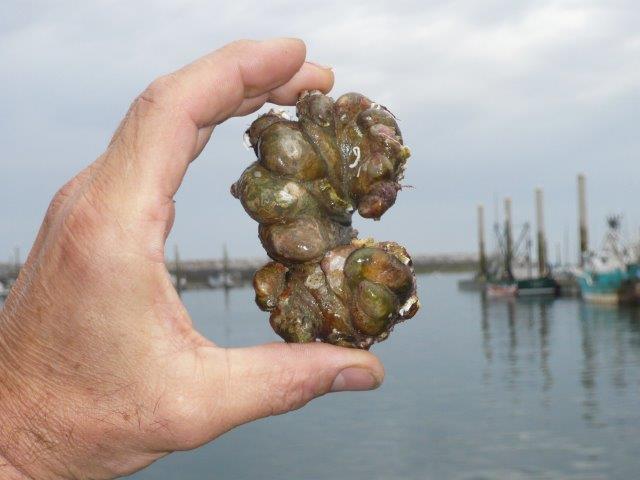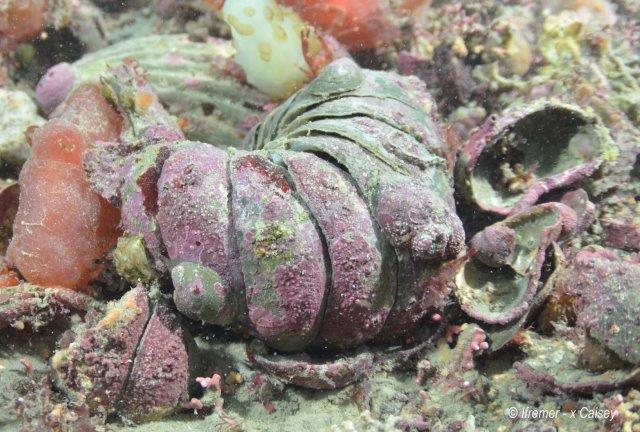Wooden pallets, marine litter, ship hulls, fishing gear. Ballast water and airplanes. Contaminants on animals, plants, or bait. Intentional release or lucky escape. There are many pathways for organisms to hitchhike their way to a new environment and establish as a non-indigenous species.
The introduction of aquatic non-indigenous species (ANS) has
become a major driver for global changes in species biogeography. It is an
issue addressed by both ICES Working Group on Introduction and Transfers of
Marine Organisms (WGITMO) and
ICES-IOC-IMO Working Group on Ballast and Other Ship Vectors (WGBOSV).
Together, these groups collaborate on the introduction and transfer of
biofouling organisms through ship vectors, as well as on climate change impacts
on the establishment and spread of ship-mediated nonindigenous species,
particularly as they relate to the Arctic. The groups have now jointly produced an impressive paper examining
spatial patterns and temporal trends of ANS detections since 1965 to inform
conservation policy and management.
The authors chose to cover a 50-year period (1965-2015) "with the assumption that there has been increasing awareness and more comprehensive reporting since 1965, with time‐lags presumably being smaller compared to reports prior to 1965".
More than 2200 records were assembled for this time period
across 49 global aquatic ecosystems - approximately one new detection every 8.4
days. This synthesis highlights the magnitude of recent ANS detections, yet
almost certainly represents an underestimate as many ANS go unreported due to
limited search effort and diminishing taxonomic expertise. There is a critical
need to implement standardized, repeated methods across regions and taxa to
improve the quality of global-scale comparisons and sustain core measures over
longer timescales.
Lisa Drake, Chair of WGBOSV states that, "This ambitious analysis is quite timely. It can be used to
inform management decisions, since limited resources must be allocated to
reduce the transport, release, and spread of ANS, which occur via multiple
pathways. Additionally, this 50-year perspective provides an important lens
through which the effects of regulatory measures can be assessed over time".
WGITMO and WGBOSV are composed of scientists with extensive
knowledge of ship-mediated biological invasions who strive to advance the
scientific understanding needed to guide management and policy decisions. The
groups enjoy a very close working relationship and for nearly 20 years, have held
joint meetings to discuss new research findings, share ideas, and develop
future collaborations.
Sarah Bailey, lead author and Chair of ICES Human Activities, Pressures and
Impacts Steering Group (HAPISG) adds,
“This paper was a direct result of the working groups’ shared terms of
reference and wouldn’t have come together without networking and communications
during annual working group meetings”.


Crepidula fornicata. Photos: Xavier Caisey, Ifremer.
Species on the move
The slipper limpet, Crepidula fornicata, is one example of a species unintentionally introduced. Originally, the growing popularity in oyster consumption towards the end of the nineteenth century in Britain, led to the import of American oysters from the east coast of the USA. C. fornicata were present on these oysters that were stored in barrels in bays.
Thousands of vessels and floating
landing stages used for the Normandy D-Day landings in the Second World War played a second part in the further distribution of C. fornicata, along with allied boats that had come from the USA or northern Europe.
C. fornicata now stretches over 24
degrees of latitude, distributed on all European seasides and the English Channel.
Read the full paper Trends in the detection of aquatic non-indigenous species across global marine, estuarine and freshwater ecosystems: a 50-year perspective in Diversity and Distributions.

